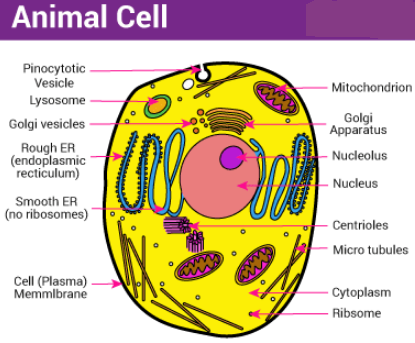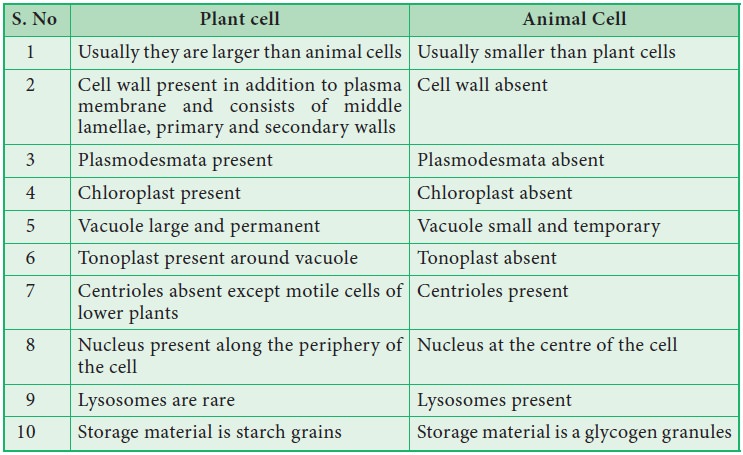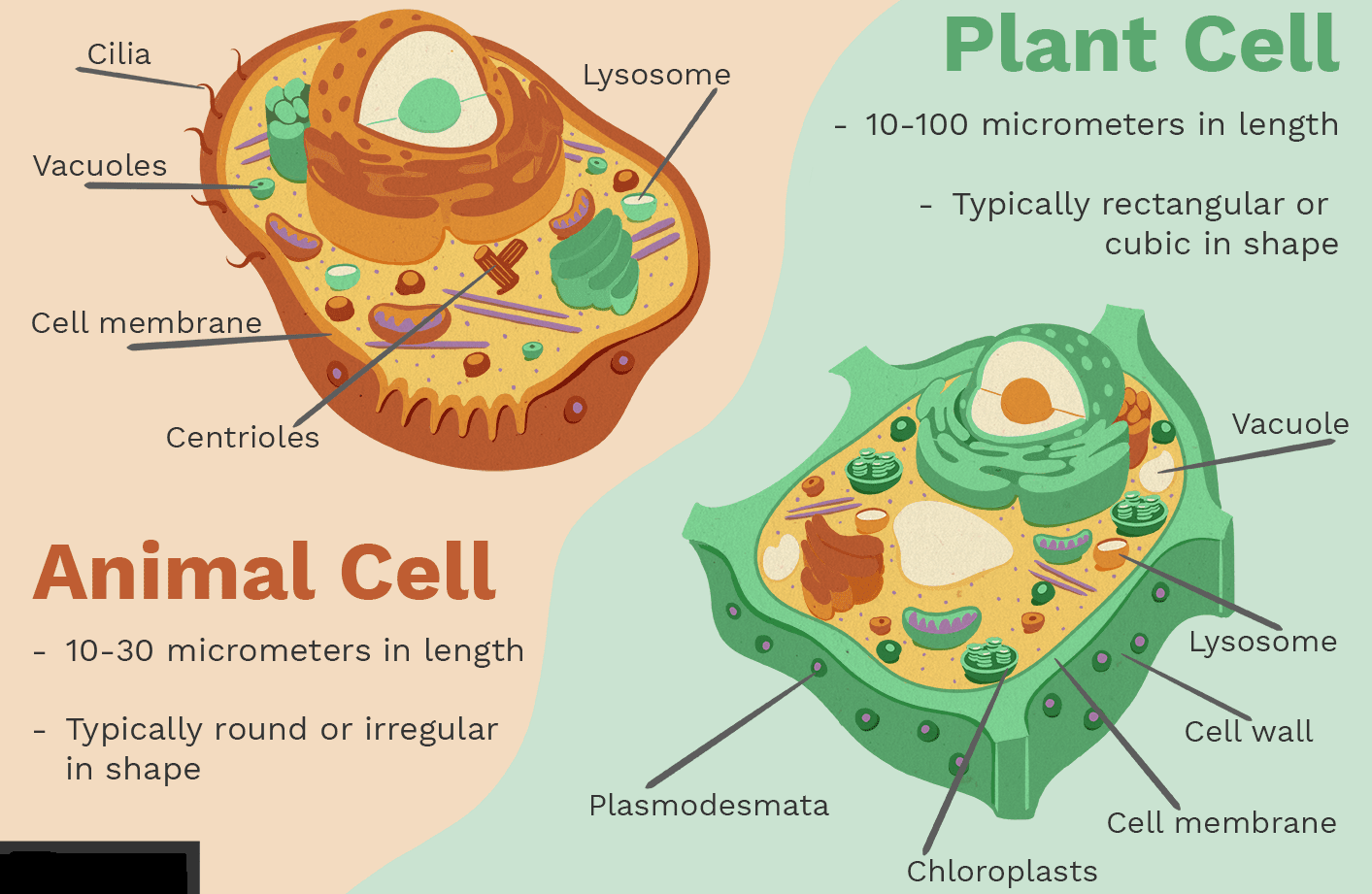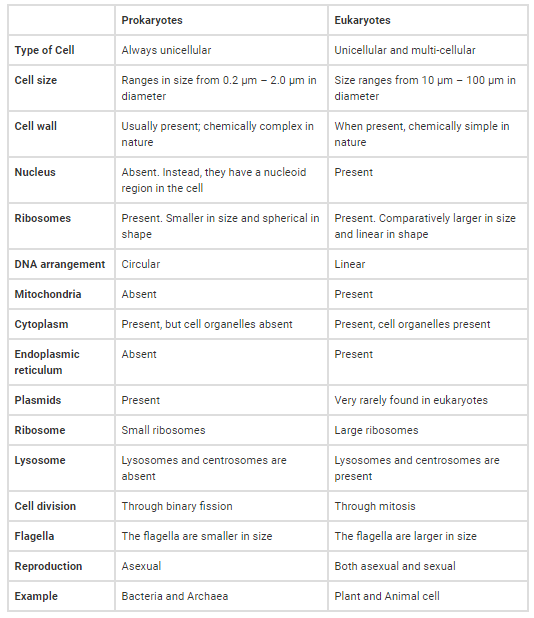The Jan 26th Static Quiz on Science and Technology (Cell Biology, Vitamins and Minerals)
Quiz-summary
0 of 10 questions completed
Questions:
- 1
- 2
- 3
- 4
- 5
- 6
- 7
- 8
- 9
- 10
Information
The Jan 26th Static Quiz on Science and Technology (Cell Biology, Vitamins and Minerals)
You have already completed the quiz before. Hence you can not start it again.
Quiz is loading...
You must sign in or sign up to start the quiz.
You have to finish following quiz, to start this quiz:
Results
0 of 10 questions answered correctly
Your time:
Time has elapsed
You have reached 0 of 0 points, (0)
Categories
- Not categorized 0%
- 1
- 2
- 3
- 4
- 5
- 6
- 7
- 8
- 9
- 10
- Answered
- Review
- Question 1 of 10
1. Question
Which among the following Vitamins helps in clotting of Blood?
CorrectAns;- d) Vitamin K
Explanation;-
• Vitamin K is a nutrient that the body needs to stay healthy. It’s important for blood clotting and healthy bones and also has other functions in the body.
• If you are taking a blood thinner such as warfarin (Coumadin®), it’s very important to get about the same amount of vitamin K each day.IncorrectAns;- d) Vitamin K
Explanation;-
• Vitamin K is a nutrient that the body needs to stay healthy. It’s important for blood clotting and healthy bones and also has other functions in the body.
• If you are taking a blood thinner such as warfarin (Coumadin®), it’s very important to get about the same amount of vitamin K each day. - Question 2 of 10
2. Question
Which of the following are fat soluble Vitamins?
1. Vitamin A
2. Vitamin B
3. Vitamin C
4. Vitamin DCorrectAns;- d) Only 1 and 4
Explanation;-
• There are four types of fat-soluble vitamin, each of which offers different benefits:-
1. Vitamin A is integral to bone formation, tooth formation, and vision. It contributes to immune and cellular function while keeping the intestines working properly.
2. Vitamin D aids in the development of teeth and bone by encouraging the absorption and metabolism of phosphorous and calcium.
3. Vitamin E is an antioxidant that helps fight infection and keeps red blood cells healthy.
4. Vitamin K is central to blood clotting and also keeps bones healthy.
• The water-soluble vitamins include ascorbic acid (vitamin C), thiamin, riboflavin, niacin, vitamin B6 (pyridoxine, pyridoxal, and pyridoxamine), folacin, vitamin B12, biotin, and pantothenic acid.IncorrectAns;- d) Only 1 and 4
Explanation;-
• There are four types of fat-soluble vitamin, each of which offers different benefits:-
1. Vitamin A is integral to bone formation, tooth formation, and vision. It contributes to immune and cellular function while keeping the intestines working properly.
2. Vitamin D aids in the development of teeth and bone by encouraging the absorption and metabolism of phosphorous and calcium.
3. Vitamin E is an antioxidant that helps fight infection and keeps red blood cells healthy.
4. Vitamin K is central to blood clotting and also keeps bones healthy.
• The water-soluble vitamins include ascorbic acid (vitamin C), thiamin, riboflavin, niacin, vitamin B6 (pyridoxine, pyridoxal, and pyridoxamine), folacin, vitamin B12, biotin, and pantothenic acid. - Question 3 of 10
3. Question
Which of the following statements about Plant Cell are correct?
1. The cell wall is absent in Plant cell
2. The lysosomes are absent in plant cell
3. The mode of nutrition is mainly autotrophicCorrectAns;- c) Only 3
Explanation;-
• The 1st and 2nd statement are incorrect.
About Plant Cell
• Plant cells are eukaryotic cells that vary in several fundamental factors from other eukaryotic organisms. Both plant and animal cells contain nucleus along with similar organelles. One of the distinctive aspects of a plant cell is the presence of a cell wall outside the cell membrane.
• Different types of plant cells include parenchymal, collenchymal, and sclerenchymal cells.
• The three types differ in structure and function.
• The Cell wall is present in Plant cell
• The lysosomes are present but are very rare
• The mode os nutrition is primarily autotrophic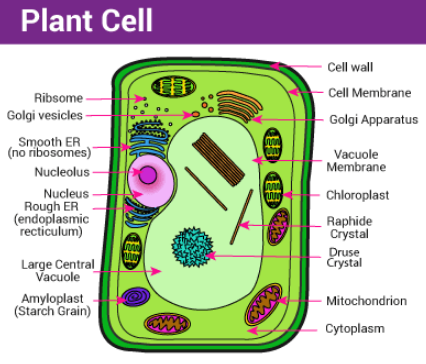 Incorrect
IncorrectAns;- c) Only 3
Explanation;-
• The 1st and 2nd statement are incorrect.
About Plant Cell
• Plant cells are eukaryotic cells that vary in several fundamental factors from other eukaryotic organisms. Both plant and animal cells contain nucleus along with similar organelles. One of the distinctive aspects of a plant cell is the presence of a cell wall outside the cell membrane.
• Different types of plant cells include parenchymal, collenchymal, and sclerenchymal cells.
• The three types differ in structure and function.
• The Cell wall is present in Plant cell
• The lysosomes are present but are very rare
• The mode os nutrition is primarily autotrophic
- Question 4 of 10
4. Question
Which of the folllowing about Animal Cell are correct?
1. The Nucleus is present and lies in the centre of the cell
2. The Plastids are absent in Animal Cell
3. The Mitochondria Present and are numerousCorrectAns;- d) All of the above
Explanation;-
• All are correct about Animal Cell
About Animal Cell
• Animal cells are typical of the eukaryotic cell, enclosed by a plasma membrane and containing a membrane-bound nucleus and organelles. Unlike the eukaryotic cells of plants and fungi, animal cells do not have a cell wall.
 Incorrect
IncorrectAns;- d) All of the above
Explanation;-
• All are correct about Animal Cell
About Animal Cell
• Animal cells are typical of the eukaryotic cell, enclosed by a plasma membrane and containing a membrane-bound nucleus and organelles. Unlike the eukaryotic cells of plants and fungi, animal cells do not have a cell wall.

- Question 5 of 10
5. Question
Which of the following statements are correct regarding the general difference between plant and animal cells ?
1. Plant cells have cellulose cell walls whilst animal cells do not.
2. Plant cells do not have plasma membrane unlike animal cells which do.
3. Mature plant cell has one large vacuole whilst an animal cell has many small vacuoles.Select the correct answer using the code given below :
CorrectAns;- c) Only 1 and 3
Explanation;-

 Incorrect
IncorrectAns;- c) Only 1 and 3
Explanation;-


- Question 6 of 10
6. Question
Which of the following differnce are correct about Prokaryotic and Eukaryotic cell?
1. Eukaryotic cells are cells that possess a true nucleus along with membrane-bound organelles.
2. A prokaryotic cell is a primitive type of cell that is characterized by the absence of a nucleus.
3. Eukaryotes can either be unicellular or multicellular.
4. Prokaryotes are exclusively unicellular.CorrectAns;- d) All of the above
Explanation;-
• All the statements about Prokaryotic and Eukaryotic cell are correct.
• A prokaryotic cell is a primitive type of cell that is characterized by the absence of a nucleus. Furthermore, prokaryotes do not possess membrane-bound cellular organelles. Prokaryotes are exclusively unicellular.
• Eukaryotic cells are cells that possess a true nucleus along with membrane-bound organelles. Eukaryotes can either be unicellular or multicellular.
• The defining characteristic feature that distinguishes between prokaryotic and eukaryotic cell is the nucleus. In prokaryotic cells, the true nucleus is absent, moreover, membrane-bound organelles are present only in eukaryotic cells.
• Other major differences between prokaryotic and eukaryotic cells are that prokaryotic cells are exclusively unicellular, while the same does not apply to eukaryotic cells. Incorrect
IncorrectAns;- d) All of the above
Explanation;-
• All the statements about Prokaryotic and Eukaryotic cell are correct.
• A prokaryotic cell is a primitive type of cell that is characterized by the absence of a nucleus. Furthermore, prokaryotes do not possess membrane-bound cellular organelles. Prokaryotes are exclusively unicellular.
• Eukaryotic cells are cells that possess a true nucleus along with membrane-bound organelles. Eukaryotes can either be unicellular or multicellular.
• The defining characteristic feature that distinguishes between prokaryotic and eukaryotic cell is the nucleus. In prokaryotic cells, the true nucleus is absent, moreover, membrane-bound organelles are present only in eukaryotic cells.
• Other major differences between prokaryotic and eukaryotic cells are that prokaryotic cells are exclusively unicellular, while the same does not apply to eukaryotic cells.
- Question 7 of 10
7. Question
The Lysosomes are known as “suicidal bags” because
CorrectAns;- c) Hydrolytic activity
Explanation;-
• Lysosomes are sphere-shaped sacs filled with hydrolytic enzymes that have the capability to break down many types of biomolecules.
• Lysosomes are known as suicide bags of the cell because they contain lytic enzymes capable of digesting cells and unwanted materials.IncorrectAns;- c) Hydrolytic activity
Explanation;-
• Lysosomes are sphere-shaped sacs filled with hydrolytic enzymes that have the capability to break down many types of biomolecules.
• Lysosomes are known as suicide bags of the cell because they contain lytic enzymes capable of digesting cells and unwanted materials. - Question 8 of 10
8. Question
Which of the following vitamins cannot be produced by our body?
CorrectAns;- d) All of the above
Explanation;-
• Humans cannot synthesize vitamins A, B1 (thiamine), B2 (riboflavin), B5 (pantothenic acid), B6 (pyridoxine), B7 (biotin), B9 (folate), B12 (cobalamin), E and K but are able to synthesize some vitamin B3 (niacin) and D.
• Fat soluble vitamins ADEK mix in fats n lipids.
• They tend to be stored in the body along with fat such as in the liver.
• Even if not taken in the daily diet body can utilize the stored vitamins. Risk of toxicity if overdosed n low risk of deficiency.
• Water soluble vitamins B complex n C mix in water n not fats.
• Found in foods with high water content and low fat example pluses, fruits, vegetables.
• Little or almost no storage in the body as they tend to flush out daily in the urine.
• Cannot be cannot be made by the body.IncorrectAns;- d) All of the above
Explanation;-
• Humans cannot synthesize vitamins A, B1 (thiamine), B2 (riboflavin), B5 (pantothenic acid), B6 (pyridoxine), B7 (biotin), B9 (folate), B12 (cobalamin), E and K but are able to synthesize some vitamin B3 (niacin) and D.
• Fat soluble vitamins ADEK mix in fats n lipids.
• They tend to be stored in the body along with fat such as in the liver.
• Even if not taken in the daily diet body can utilize the stored vitamins. Risk of toxicity if overdosed n low risk of deficiency.
• Water soluble vitamins B complex n C mix in water n not fats.
• Found in foods with high water content and low fat example pluses, fruits, vegetables.
• Little or almost no storage in the body as they tend to flush out daily in the urine.
• Cannot be cannot be made by the body. - Question 9 of 10
9. Question
These are the elements, without which, the plants will not be able to complete its life cycle?
CorrectAns;- d) Essential elements
Explanation;-
About Plant essential nutrients
• They are carbon, hydrogen, nitrogen, oxygen, phosphorus, and potassium. Secondary nutrients are those usually needed in moderate amounts compared to the primary essential nutrients.
• The secondary nutrients are calcium, magnesium, and sulfur.IncorrectAns;- d) Essential elements
Explanation;-
About Plant essential nutrients
• They are carbon, hydrogen, nitrogen, oxygen, phosphorus, and potassium. Secondary nutrients are those usually needed in moderate amounts compared to the primary essential nutrients.
• The secondary nutrients are calcium, magnesium, and sulfur. - Question 10 of 10
10. Question
Which of the following is the most essential nutrient for a woman during her initial stages of pregnancy to prevent birth defects?
CorrectAns;- c) It can be synthesized in the body
Explanation;-
• Vitamin C is a vitamin found in various foods and sold as a dietary supplement. It is used to prevent and treat scurvy.
• Vitamin C is an essential nutrient involved in the repair of tissue and the enzymatic production of certain neurotransmitters.
• Ascorbic Acid is a natural water-soluble vitamin (Vitamin C).
• Ascorbic acid is a potent reducing and antioxidant agent that functions in fighting bacterial infections, in detoxifying reactions, and in the formation of collagen in fibrous tissue, teeth, bones, connective tissue, skin, and capillaries.
• Human cells cannot perform the crucial last step of vitamin C biosynthesis, the conversion of l-gulono-g-lactone into ascorbic acid, which is catalyzed by the enzyme gulonolactone oxidase.IncorrectAns;- c) It can be synthesized in the body
Explanation;-
• Vitamin C is a vitamin found in various foods and sold as a dietary supplement. It is used to prevent and treat scurvy.
• Vitamin C is an essential nutrient involved in the repair of tissue and the enzymatic production of certain neurotransmitters.
• Ascorbic Acid is a natural water-soluble vitamin (Vitamin C).
• Ascorbic acid is a potent reducing and antioxidant agent that functions in fighting bacterial infections, in detoxifying reactions, and in the formation of collagen in fibrous tissue, teeth, bones, connective tissue, skin, and capillaries.
• Human cells cannot perform the crucial last step of vitamin C biosynthesis, the conversion of l-gulono-g-lactone into ascorbic acid, which is catalyzed by the enzyme gulonolactone oxidase.

